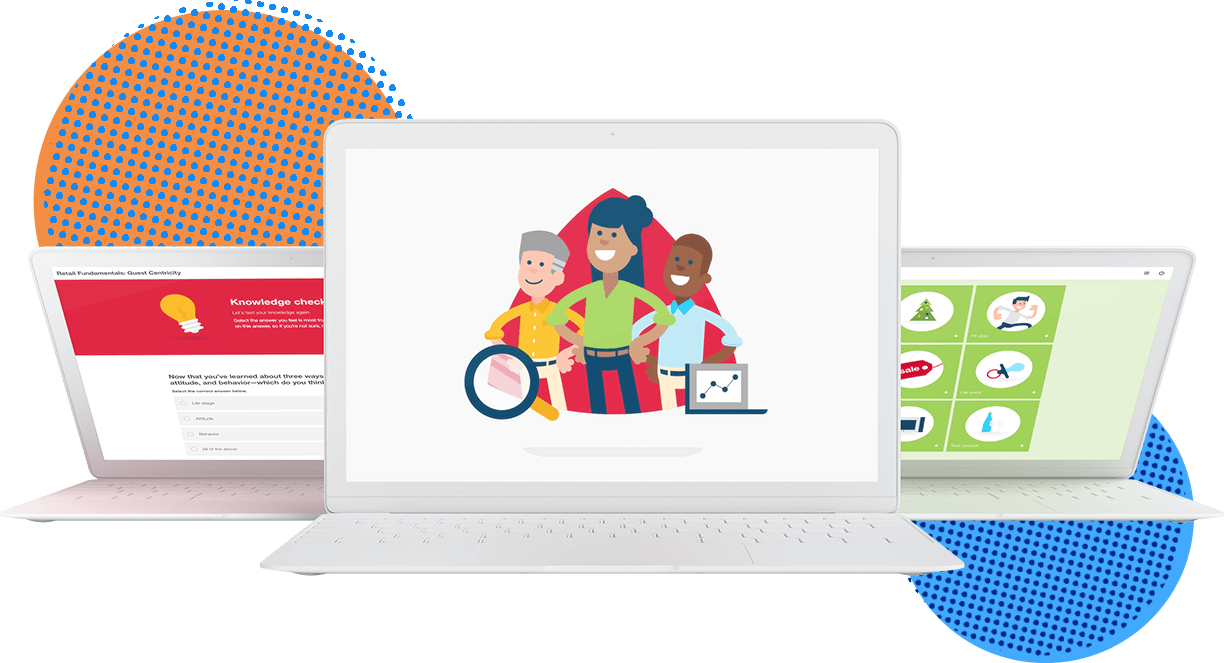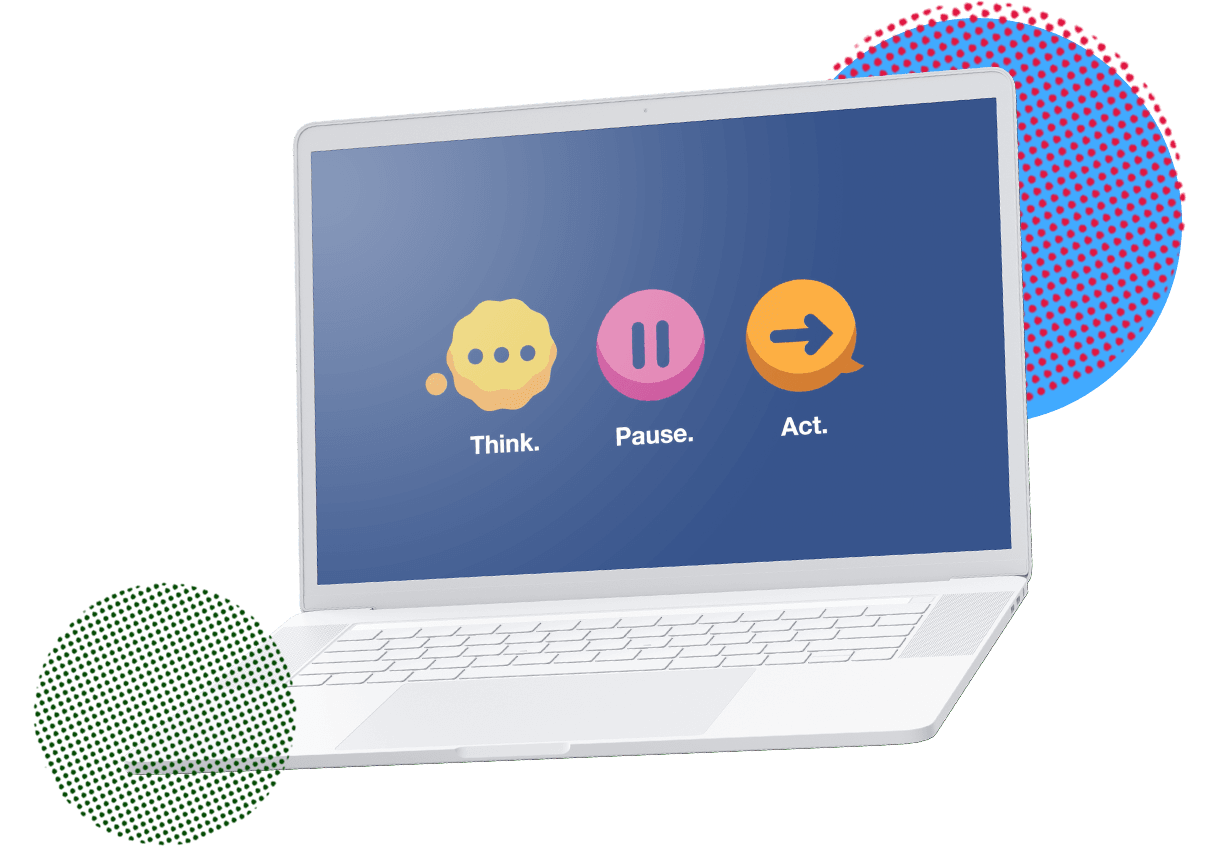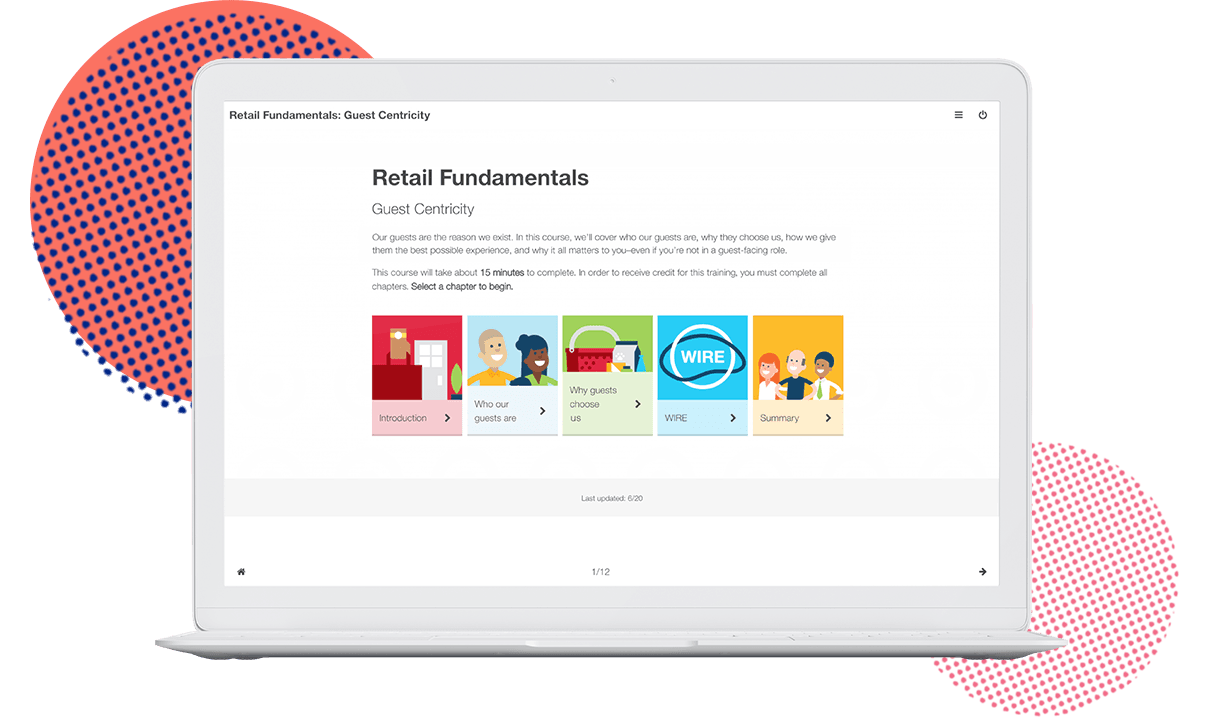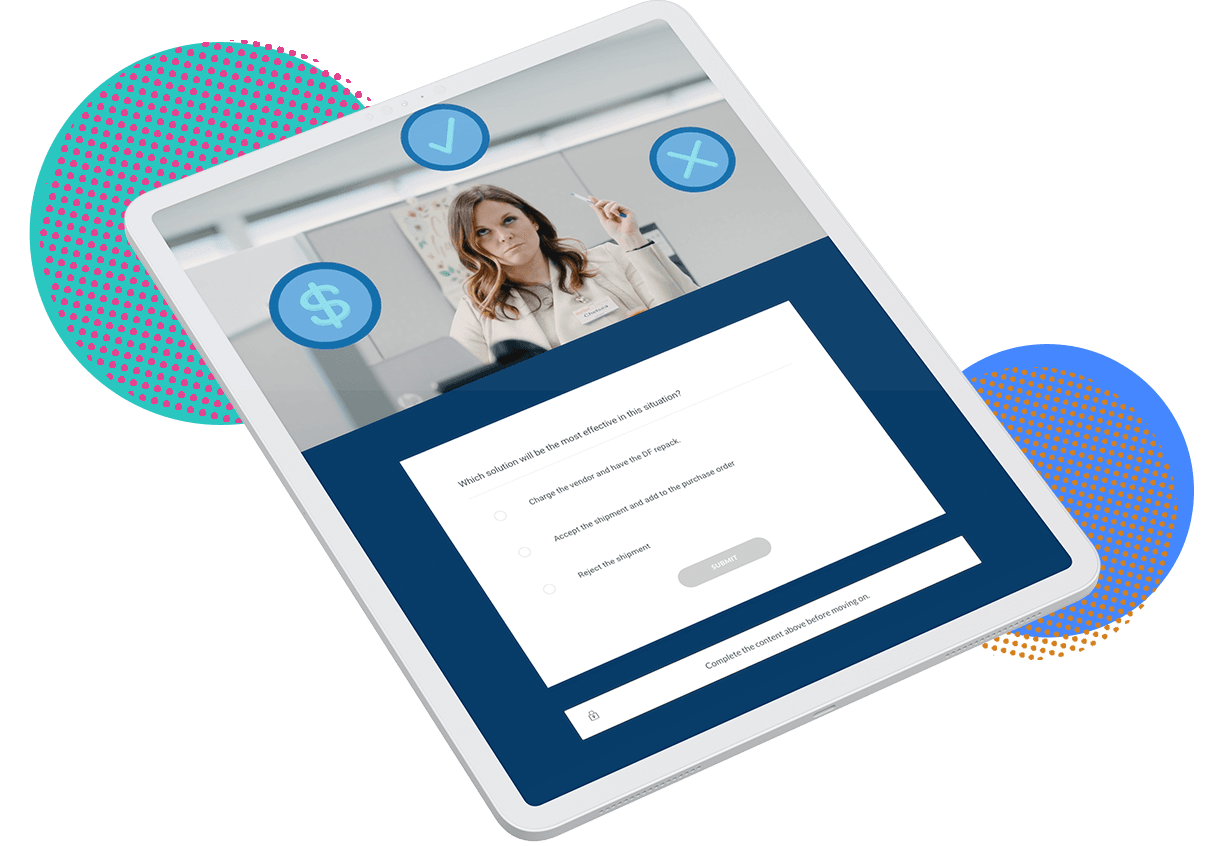Grocery store training must adequately address the unique challenges facing the industry as the world continues to modernize. How will grocery stores and retailers continue to innovate as online shopping and delivery continues to grow? What will chains do to address the environmental factors that directly impact the items on their shelves?
And most importantly, how do grocery and retail stores create a culture and environment that communicates their value and importance to customers for future success? We’re diving into those questions by analyzing two stores—a large, national retailer and a regional grocery chain—and how they’ve tackled these challenges with custom grocery training.
When it comes to grocery training, here’s what’s important
Inventory and distribution
Distribution and stockroom workers aren’t the only employees who should have an understanding of how product moves from farms and factories to store shelves. In fact, great training for supermarket employees should educate everyone on how decisions in the store and corporate offices impact the entire supply chain.
Sales
You can’t talk about grocery store training without talking about sales. Sales is one of the driving forces of store profits, and ensuring your team is well equipped to navigate the sales process with ease is crucial for happy customers and your company’s bottom line. And when replacing a sales rep costs an average of $115,000, this isn’t something you want to mess up.
Soft skills
While job roles and sales skills are key for retail training, soft skills are equally important for employees to help create customer satisfaction and loyalty. Some of the most valued soft skills for retail workers include customer service, organization, attention to detail, and active listening.
Policies and procedures
Every company has mandatory policies and procedures they must include in their grocery store training. An engaging approach with relevant content is key—after all, policies are vital to ensure employee, company, and customer success and safety. Store training like this can include workplace safety, workers’ rights and policies, or even health and safety topics like personal protective equipment.
Addressing bias training for a national retailer
Communicating company values across stores nationwide
Our client came to us with a challenge to create a supermarket management training program to address bias as well as a fundamental store training to walk team members through the store’s ethos, distribution and sales processes, customer philosophy, and more. Being a large, national retailer with over 1500 stores across the United States, it’s essential for them to replicate company values across all of their locations to create a cohesive customer experience.

Our training solution
For the bias training, we created an app-based learning experience using eLucid to demonstrate the store’s three-step bias response model: Think. Pause. Act. Training is most effective when it meets learners where they’re at and offers an experience that keeps their attention; to do this, we created a motion graphic video to show the bias response model in a clear and visually appealing way.

To cover fundamentals, we developed a 4-course series with sections focusing on customer centrality, retail macro-forces, store performance, and the journey of products from manufacturers to store shelves. Our client needed a course that would not only give managers what they needed to succeed in their everyday tasks; but also a deeper understanding of driving forces, values, and motivation for the company. This course also used the eLucid app framework, and we implemented additional motion graphic videos for each course.

Bridging training between corporate, distribution, and store in a regional grocery chain
Understanding the journey from distribution centers to store shelves
Our second grocery client is a large regional chain who saw disconnect between their business analysts, associate buyers, and the distribution centers. Most of these analysts and buyers were young hires, and the only direct exposure they had to distribution were in-person tours that had to be arranged by the company. These tours, though helpful for these employees to experience, weren’t helping them see how their decisions in the corporate offices impacted the journey of product from centers to shelves.
Our training solution
With this client’s grocery training, we knew the most important thing was to create learning that challenged business analysts and associate buyers to think critically about the farther-reaching impact of decisions made at the office. Powered by Rise (by Articulate), we created a motion-graphic video that told the story of a product’s journey from the distribution center to the shelf. The video contained valuable information not only for the business analysts and associate buyers, but it also adds value to the chain’s larger employee base.

The video was only part of how we addressed the challenge at hand. To ground the store training in real world choices, we filmed an interactive, live-action video using a store, a distribution center, and a corporate office. Business analysts and associate buyers were presented with scenarios and given three possible responses. Whichever response they chose was followed by a video sequence, revealing exactly how their choice would impact both distribution centers and stores. As an added benefit, users also see the results of choices they didn’t make, helping them understand which decisions are better than others.

Grocery store training with results that speak for themselves
Both of these store training clients make one thing abundantly clear: custom training is a powerful tool for addressing challenges, building strong teams, and getting results. Some of the feedback we’ve received so far on these training solutions are that they’ve been impactful and helped bridge understanding between their employees. Next time you encounter a learning gap, roadblock, or new training concept, we hope you’ll consider the benefits of a custom elearning solution, and connecting with us to help!
BTW, did you know we made a free PPE training course based on the CDC’s guidance?
Make sure your team is following the correct procedures as you get back to business.
Download it now→
